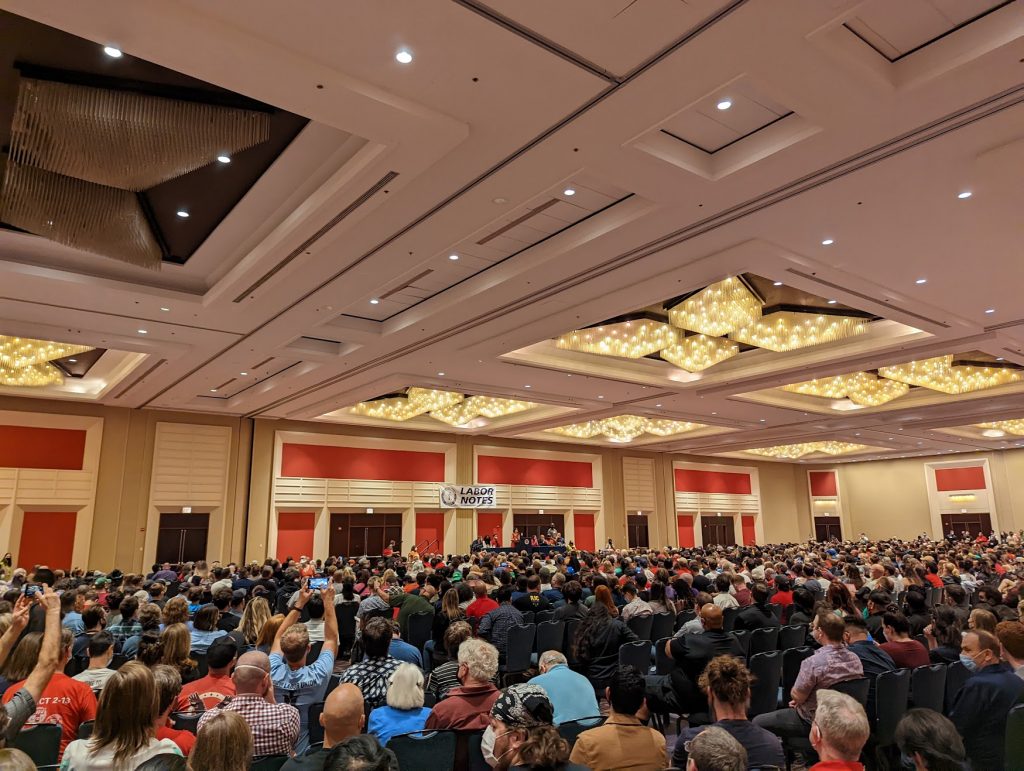
The 2022 Labor Notes Conference, a gathering of “troublemakers” and labor activists from across the United States and beyond, took place in Chicago during a mild mid-June weekend. Attendance was a jam-packed whirlwind of panels, workshops, training sessions, and socials. Over 4,000 organizers and activists commingled – including educators, baristas, newsroom workers, Amazon warehouse organizers, and Teamsters.
Labor Notes marked an unforgettable four days of learning, connecting, and building solidarity between wildly diverse groups, and the lessons I learned from comrades across the country will stick with me for years to come.
My Experiences
When I arrived Friday morning, the crowd sizes shocked me. Thousands of people packed into the Hyatt Regency lobby, milling about in facemasks and union gear. Hundreds of people lined up to register as red agenda booklets flashed in everyone’s hands. As rivers of people packed into rooms for presentations like “Austerity, Debt, and the Fight for Education Funding” and “A Collective Response to Divisions in the Workplace and Beyond.” People of all ages, occupations, races, and genders sat side by side, soaking in the material on display.
Members of the Communications Workers of America (CWA) led my first workshop, “Building a Member Organizer Program.” I broke out into a group that included university campus workers, rideshare drivers, journalists, Alphabet Workers Union (AWU) members, and educator organizers to discuss the challenges we might face in building skills and developing new member-organizers. Meetings of diverse groups like this, as journalist Alex Press noted in Jacobin, “could only have taken place at this year’s Labor Notes conference.” The rest of the weekend followed suit.
Vocal expressions of solidarity and support for one another constituted the most positive norm that attendees built. Crowds regularly applauded speakers when they introduced themselves, whether they were panelists or simply attendees asking a question. People assumed trust and solidarity, warmly greeting and thanking each other in conversation. These trends point to something special. As Stacy Davis Gates – president-elect of the Chicago Teachers Union – put it in her opening night speech, the labor movement speaks in collective terms; as Bernie Sanders put it many times before, “Not Me, Us.” Comrades from hugely diverse backgrounds and politics practiced this principle consistently.
The conference was not a sectarian event — there was no political litmus test to attend. But when Stacy Davis Gates, Bernie Sanders, and Amazon Labor Union president Chris Smalls spoke of billionaire influence in our communities, police violence against black workers on and off the job, and politicians’ failures to respond to climate crises and COVID, all attendees united in applause. All told, Labor Notes was incredibly successful in leading diverse parts of the labor movement to join together and demand more.
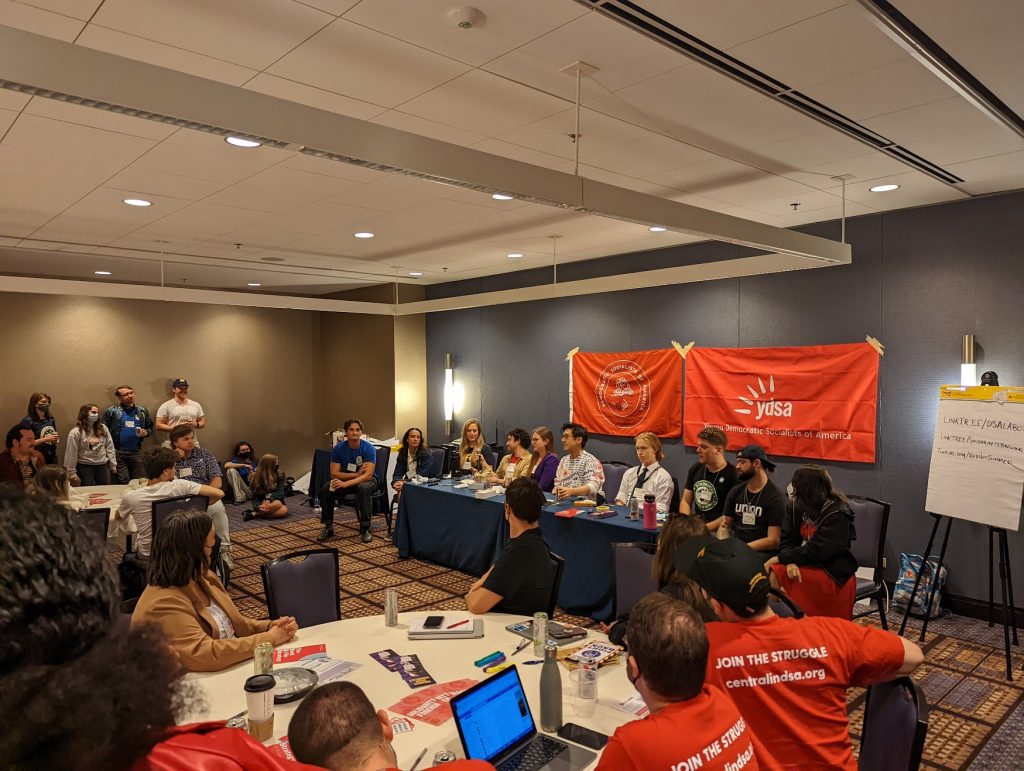
The unofficial theme of the conference was that our movement for justice and democracy in all aspects of society — including the labor movement — is alive and constantly growing. Labor Notes was, and continues to be, a reminder that our movement is dynamic — an expression of the lives of all who compose it. What’s more, many of the discussions held across the conference were placed in the context of the recent upsurge in labor militancy, with strikes and class-struggle rhetoric becoming more common among organized workers across the country. In other words, our movement is building our strength and testing the limits of our collective capacity in real-time.
The stakes of conflict and the real enemies and struggles we face as a movement came into starker contrast in this context. Socialists should understand that we are situated within a broader struggle for democracy and justice (i.e. “a sea to swim in”), and working to make our unions into real fighting organizations to reshape society for the whole working class. The work to merge the labor movement with the socialist movement into one unified expression of organized working-class power is more important than ever.
Importantly, this year’s Labor Notes conference revealed a tremendous degree of unity for DSA’s perspective with many non-socialist labor militants. It is in this context that socialists can understand our collective and individual positions within the socialist movement, the labor movement, and American society as a whole.
Where we go from here
Atlanta DSA, both as an organization and as workers ourselves, has taken big steps in recent months to deepen our relationship with ongoing labor struggles. Building on that work, developing new leaders, and adopting bolder tactics will be key to any strategy to strengthen and reconnect organized socialist politics with the labor movement. As socialists, we must consider how we can set the stage for the working class as a whole to organize. We have three main tasks: labor solidarity, rank-and-file militancy, and political coherence.
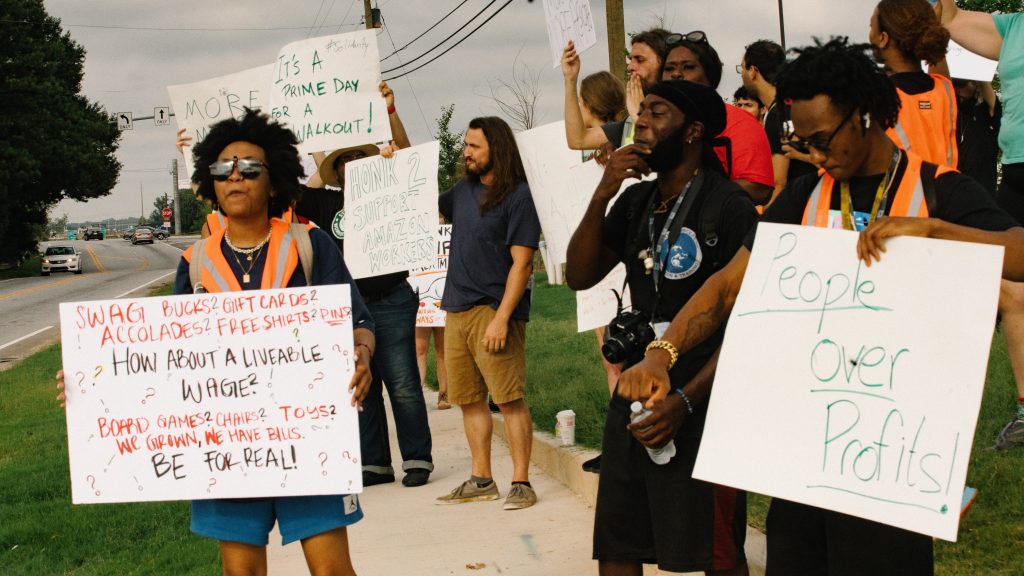
First, we practice labor solidarity work to provide community support to workplace leaders and striking workers. This type of work has several advantages, shown by our solidarity programs for Starbucks workers across the Atlanta area. Labor solidarity is low-stakes, low-risk, and an easy entry point for both organizing and educating new people on the importance of the labor movement. Strategically, labor solidarity work respects the leadership and autonomy of organic working-class leaders in their communities and workplaces, and allows the broader community to learn from them as we support them. Solidarity work is also a great way to demonstrate, in deeds as well as words, our viewpoint that the working class is strongest when it acts in solidarity, and that our struggles are connected. Winning any workplace campaign is hard, whether it’s a union drive or a struggle for dignity, and community support can tip the scales in favor of the workers. Most importantly, solidarity drives help connect individual workplace leaders into a network for shop-floor militants across many workplaces and industries, who talk with and show up for each other in times of need.
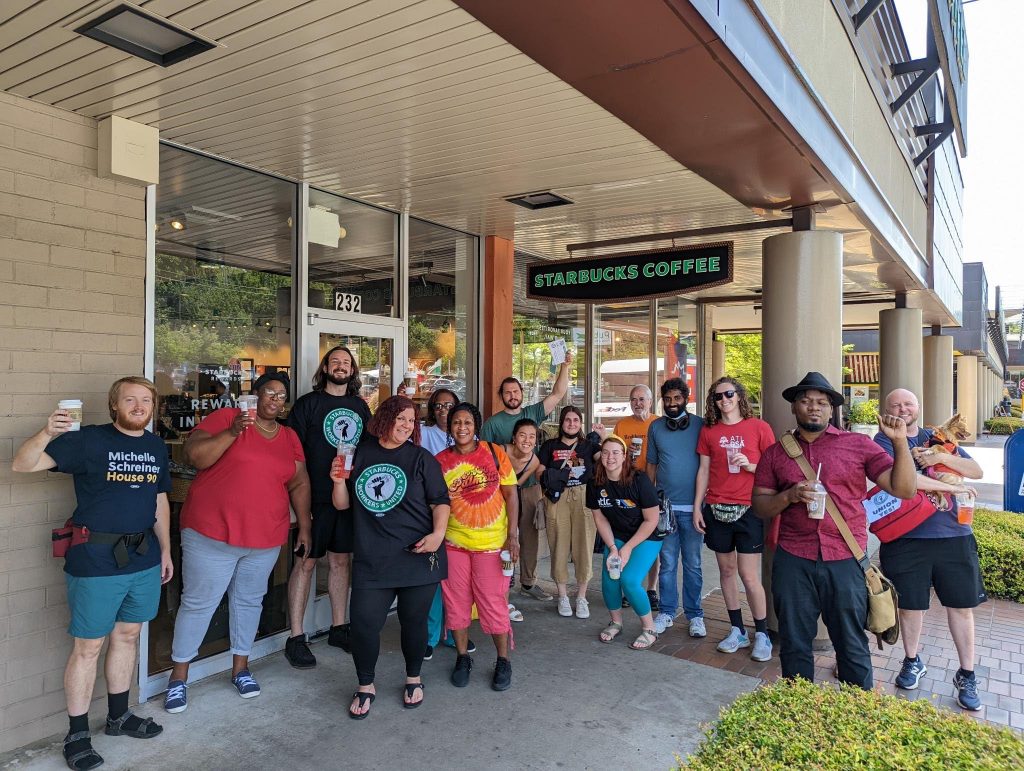
Second, socialists are also working to build organized activity in our own workplaces, either through directly organizing new unions and labor groups with co-workers, or through forming caucuses to strengthen existing unions. The vast majority of people are workers and therefore have a place in the labor movement, even if they are not organized into a union. However, to turn our relationships with our coworkers into class power, we can start to organize where many of us spend the bulk of our waking hours – at work. Workplace organizing has been resurging in recent years, with the “Red State Revolt” teacher strike wave of 2018-19, the victory of Amazon Labor Union and new models of unionism at several Amazon locations, and corporate giant Starbucks undergoing a strike-happy, worker-driven organizing wave. With union organizing more relevant than it has been in decades, workers (especially young people) are encouraged to experiment with how they relate to their coworkers. In other words, we can let a thousand flowers bloom when it comes to labor organizing.
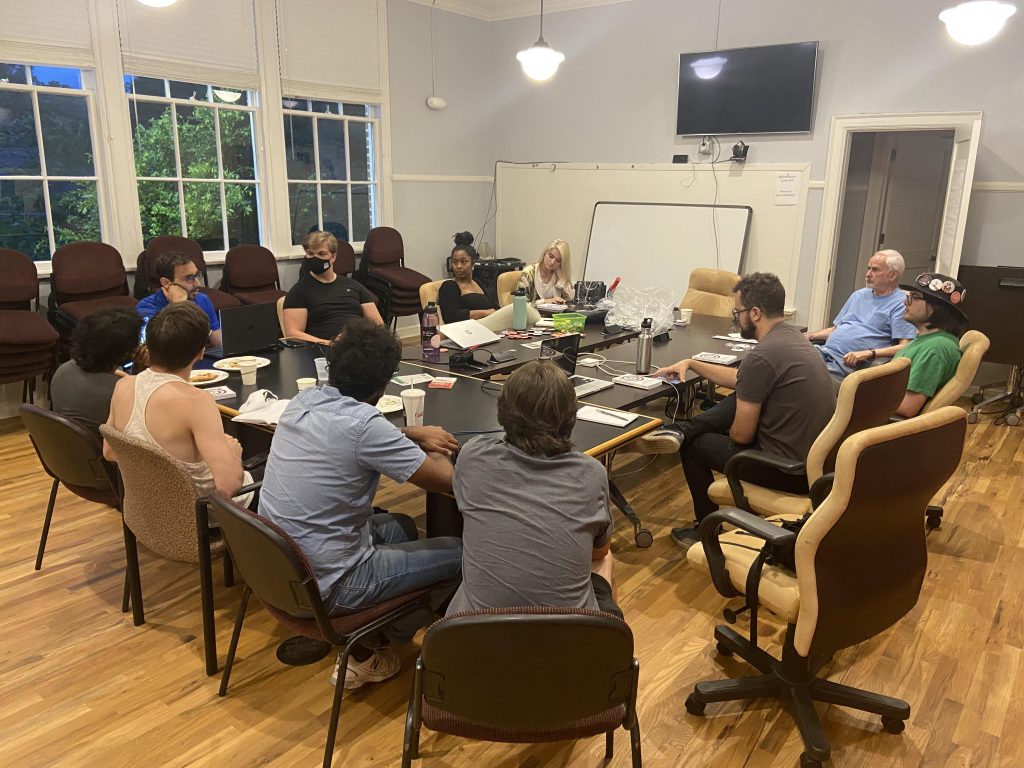
In practice, this has meant that Atlanta DSA members have coached organizing workers through The Emergency Workplace Organizing Committee (EWOC), Know-Your-Rights At Work trainings, and monthly Workplace Roundtable series for members to discuss their jobs, workplace dynamics, and practical organizing skills. Every worker has the potential to be a workplace leader, and our task is to develop the skills and commitment in every working person to become one.
Third, it’s crucial to cohere labor leadership in a more aggressive stance to support insurgent politics that prioritizes class struggle over compromise. Even in the US South, where union membership and political activities are historically weaker than elsewhere in the country, organized labor is a force that can punch above its weight in both money and member organization. So, while it’s vital that, as socialist organizers, we do everything in our power to rebuild and strengthen unions from the bottom up, there’s also a much-needed multiplicative benefit that political power grants to organizing workers. We must fight for political reforms that would strengthen and revitalize the labor movement, like raising the minimum wage to $15/hr, repealing anti-union “right-to-work” laws, and granting public-sector workers the right to collectively bargain and strike.
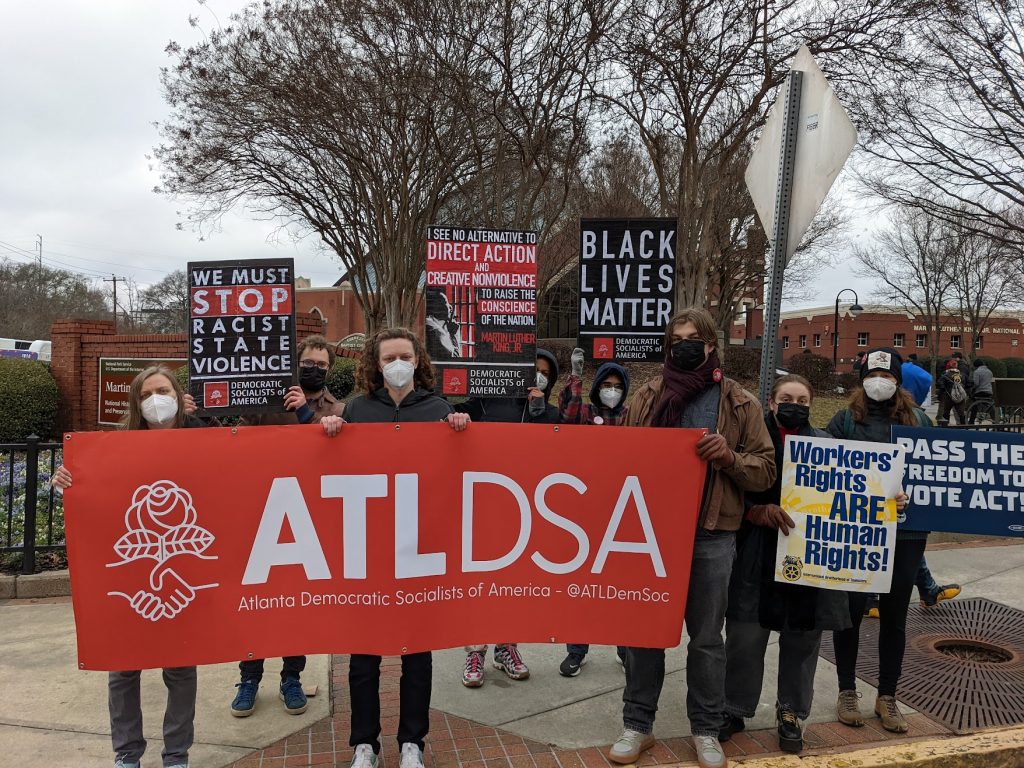
Fighting for representatives at all levels of the state that in turn fight for working people and our right to organize is crucial. But, when most local labor unions prioritize supporting “candidates who can win” – e.g. those who receive establishment backing and financial support from capitalist-class political interests – how can we build a real political alternative that fights for labor, instead of making concessions to it? We must develop and act on a realistic strategy to cohere labor’s political power, without relinquishing our values as socialists.
In summation, the Labor Notes conference showed us that the labor movement is dynamic, growing, and becoming more political and militant by the day. As socialists and workers ourselves, we are building connections between different segments of the labor movement while integrating into workplace organizing activity ourselves. Thanks to the groundwork laid by Labor Notes, we are organizing with more energy and conviction than ever.
In Chicago, union and political leaders openly and honestly agitated about police and state violence along ethnicity and nationality lines; women’s ongoing struggle for justice; trans peoples’ fight for safety and dignity; and a range of other “social” issues. What a strong labor movement reminds us is that the whole working class shares linked interests. Social divisions can and should be overcome, not reinforced. Solidarity is a constructive action, and an unbeatable force. In other words, “an injury to one is an injury to all.” There’s no better way to turn that slogan into action than through a strong, politically active labor movement.
